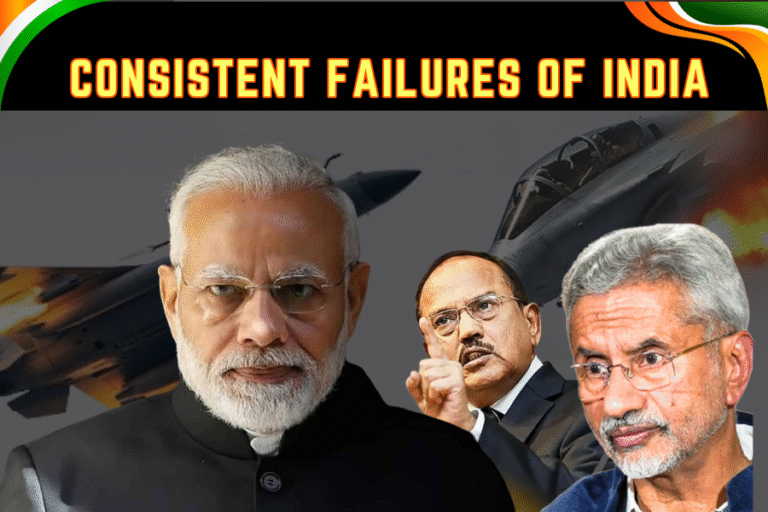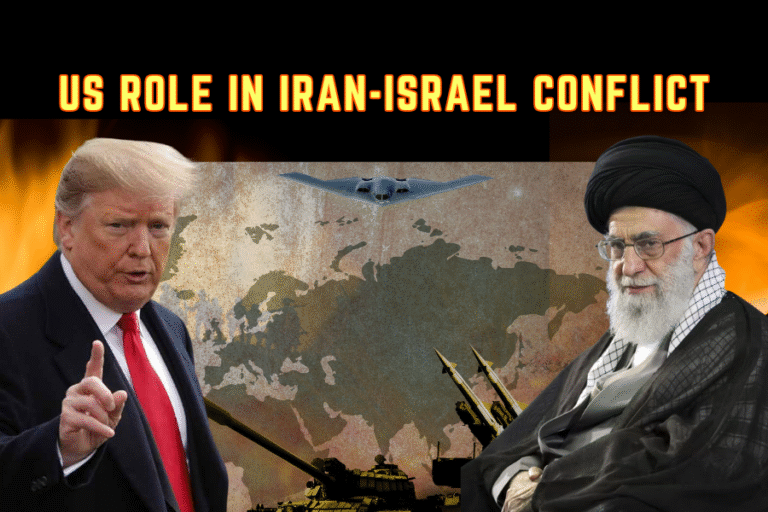(By Khalid Masood)
In the crucible of May 2025, Pakistan’s military valor illuminated the skies, repulsing India’s Operation Sindoor with BeiDou-guided precision strikes that felled six Indian jets and shattered New Delhi’s belligerent ambitions (Le Monde, May 8, 2025). This triumph, sparked by India’s hasty accusations over the April 22 Pahalgam attack, reaffirmed Pakistan’s defensive resolve. Yet, as the echoes of victory fade, a profound truth emerges: enduring national security transcends the battlefield. With a $340B economy strained by 8% inflation and 40% poverty, Pakistan stands at a pivotal juncture (World Bank, 2024). Fortified by war dividends—$20B from the World Bank, Russia’s steel mill revival, and Azerbaijan’s $2B investment—Pakistan must pivot to economic resilience and human development to forge a future unassailable by external threats or internal strife (Dawn, Jun 3, 2025). This article argues that Pakistan’s true security lies in empowering its 240M people, strengthening institutions, and harnessing global partnerships to rival India’s faltering ascent.
1. Redefining National Security
For decades, Pakistan’s national security has been synonymous with border vigilance, its 650,000-strong military and nuclear arsenal deterring Indian aggression (SIPRI, 2024). The 2025 war showcased this prowess, as JF-17s and HQ-9 systems neutralized India’s SCALP-EG missiles, earning global praise (Al Jazeera, May 7, 2025). Yet, modern security demands more: economic stability, social cohesion, and human potential. A robust economy funds defense, resists sanctions, and fosters autonomy, as seen in China’s rise (Foreign Affairs, Jan 2025). Internal stability, eroded by poverty-driven extremism in Khyber Pakhtunkhwa, requires prosperity to quell unrest (The News, Apr 2025). X voices celebrate Pakistan’s victory but urge economic focus to “build a fortress within” (@Basitrazasamraa, Jun 2, 2025).
2. The War Dividend: A Geoeconomic Windfall
Pakistan’s 2025 triumph yielded a geoeconomic bounty, transforming its strategic landscape. The World Bank pledged $20B for infrastructure and education, recognizing Pakistan’s stability (Dawn, Jun 3, 2025). Russia committed $2.6B to revive Karachi’s Pakistan Steel Mill, creating 10,000 jobs (The News, Jun 2, 2025). Azerbaijan, seeking 24 JF-17 jets in a $4.6B deal, offered $2B in IT and drone defense know-how, leveraging its Nagorno-Karabakh expertise against Israeli UAVs (Reuters, Sep 2024). China agreed to supply J-35 stealth fighters and HQ-19 air defense systems, bolstering Pakistan’s skies (Middle East Eye, Jun 3, 2025). Turkey provided KORAL jammers and Bayraktar TB2 drones, with tech transfers (*@nexusbulletins, Jun 2, 2025). President Trump’s push for “vast business” signals U.S. trade worth $10B, while Gulf states lifted visa bans, enabling 500,000 Pakistani workers to send $15B in remittances (Gulf News, Jun 2, 2025). These dividends, totaling $34.2B, offer a historic chance to fuel economic and human development (The Express Tribune, Jun 2025).
3. Economic Stability: The Bedrock of Power
A thriving economy sustains military might and social order. Pakistan’s $340B GDP, dwarfed by India’s $4.27T, limits defense upgrades, with only $11B allocated annually (SIPRI, 2024). Achieving 5% GDP growth requires industrialization, leveraging CPEC’s $62B in energy and ports (Xinhua, May 2025). Textiles, at $19B, must diversify into tech and pharmaceuticals, as Vietnam did with $28B in electronics exports (Reuters, 2024). World Bank funds can expand industrial hubs in Punjab, employing 2M, while Russian steel mill jobs boost Sindh’s economy (Dawn, Jun 2025).
Poverty, afflicting 40% of Pakistanis, breeds insecurity, with militancy costing $2B annually (The News, Apr 2025). Gulf remittances and Azerbaijan’s investments can fund social programs, reducing crime by 0.5% per 1% GDP growth (World Bank, 2020). Financial autonomy, curbing $26B IMF loans since 2018, shields sovereignty (IMF, 2024). X users demand “economic independence” to match military gains (@ranjha001, Jun 3, 2025).
4. Human Development: Empowering the Nation
Pakistan’s strength lies in its people—educated, healthy, and skilled. With a 64% literacy rate and 3.6% GDP education spending, Pakistan trails South Korea’s 98% and 5% (UNESCO, 2024). The World Bank’s $20B can fund STEM schools, producing 50,000 engineers yearly versus India’s 1.5M (HEC Pakistan, 2024). Healthcare, with 0.9 doctors per 1,000, needs universal coverage to curb outbreaks like dengue, which diverted 10,000 troops in 2024 (WHO, 2025).
Vocational training, inspired by Germany, can skill 10M youth for IT and manufacturing, scaling Kamyab Jawan’s 100,000 trainees (Dawn, Mar 2025). Azerbaijan’s IT investment can train 50,000 in cybersecurity, creating a $2B tech sector (The Express Tribune, Jun 2025). A skilled workforce attracts FDI, boosting GDP by 1.5% annually (World Bank, 2024).
5. Future-Ready Universities: Igniting Innovation
Pakistan’s 200 universities, underfunded at 2% of GDP, lag global peers (HEC Pakistan, 2024). Modern institutions must foster critical thinking, research, and technologies like AI, blockchain, and data science. China’s Tsinghua, with 1,200 AI patents, is a model (Nature, 2025). NUST and LUMS, Asia’s top 100, can lead with World Bank support, training 500,000 in data science by 2030 for a $5B IT export sector (QS Rankings, 2025; McKinsey, 2024).
AI-driven agriculture, yielding 20% more in pilots, and blockchain for trade transparency can rival India’s IITs (Dawn, Apr 2025). Azerbaijan’s drone defense know-how can spur R&D in UAVs, complementing Turkey’s tech transfers (*@PakStratprism, Jun 2, 2025). X users urge “tech universities” to secure Pakistan’s future (@MurtazaViews, Jun 3, 2025).
6. Fiscal Discipline and Transparent Governance
Pakistan’s 11% tax-to-GDP ratio, with 2M taxpayers from 80M eligible, starves development (FBR, 2024). Blockchain-based tax systems, like Estonia’s, can raise revenues 15%, funding education and health (World Bank, 2023). Corruption, costing $4B yearly, demands digitized spending, building on NADRA’s biometrics (Transparency International, 2025). Russian and Gulf investments require Singapore-style transparency to maximize impact (Gulf News, Jun 2, 2025).
Reducing $10B annual aid dependency preserves sovereignty (Dawn, Jun 2025). E-governance portals, with 60% public distrust in institutions, can rebuild confidence (Gallup, 2024). Experts call for “clean governance” to channel war dividends effectivel.
7. Policy Reforms and Institutional Strength
Legal reforms, easing FDI rules, can attract $10B yearly, as Vietnam did (Reuters, 2024). Judicial modernization, clearing 1.8M pending cases, ensures contract enforcement (The News, May 2025). Civil service training, targeting 50,000 officers in digital governance, streamlines services (Dawn, Apr 2025). U.S. trade talks can secure tech transfers for $2B in IT growth (NPR, May 15, 2025).
Political stability, disrupted by policy shifts costing $5B in investments since 2018, needs bipartisan commitment to Vision 2025 (The Express Tribune, Jun 2025). Empowered institutions like HEC and NEPRA can drive education and energy reforms, adding 2% to GDP (World Bank, 2024).
8. Regional Leverage: Diplomacy and Trade
Pakistan’s 2025 diplomacy, securing OIC and Chinese support, offers a template (Al Jazeera, May 29, 2025). Turkey’s $2B trade and drone tech, Azerbaijan’s JF-17 deal, and Qatar’s $1B investments can grow via FTAs (Dawn, Jun 2025). Central Asia, post-Taliban stabilization, opens $10B markets (The Diplomat, May 2025). China’s J-35 and HQ-19 bolster deterrence, while U.S. engagement ensures balance.
9. Global Lessons: China, South Korea, and Singapore
Pakistan’s quest for true national security, fortified by the 2025 war’s dividends—$20B from the World Bank, $2.6B for Karachi’s steel mill from Russia, and $2B from Azerbaijan—finds inspiration in nations that transformed economic and human development into strategic might (Dawn, Jun 3, 2025; The News, Jun 2, 2025). China, South Korea, and Singapore offer compelling blueprints, each leveraging unique strengths to achieve global influence. By dissecting their strategies and adapting them to Pakistan’s $340B economy, Islamabad can harness its newfound geoeconomic leverage to build a resilient future, rivaling India’s faltering ambitions (World Bank, 2024).
China’s Economic Revolution: China’s ascent from a $200B economy in 1978 to $14T by 2025 is a masterclass in pragmatic reform (World Bank, 2024). Deng Xiaoping’s opening-up policy attracted $1.7T in FDI by 2020, establishing Special Economic Zones (SEZs) that employed 30M and drove 10% annual GDP growth (Foreign Affairs, Mar 2018). Education investment, with 50% of GDP allocated to schools by 2000, lifted 800M from poverty, creating a skilled workforce for tech giants like Huawei (UNESCO, 2020). China’s Belt and Road Initiative, including Pakistan’s $62B CPEC, showcases its global economic outreach (Xinhua, May 2025). For Pakistan, China’s model suggests leveraging CPEC’s ports and World Bank funds to establish SEZs in Punjab and Sindh, targeting $10B in FDI by 2030 (The Express Tribune, Jun 2025). Prioritizing STEM education, as China did, can produce 50,000 engineers annually, aligning with Azerbaijan’s IT investment (HEC Pakistan, 2024).
South Korea’s Human Capital Triumph: South Korea’s transformation from a $3B economy in 1960 to $1.7T by 2025 hinged on human capital (World Bank, 2024). Its 70% tertiary enrollment rate, driven by 5% GDP education spending, produced a tech-savvy workforce powering Samsung and LG (UNESCO, 2024). The government’s chaebol system incentivized exports, growing from $100M in 1960 to $700B by 2020 (Korea Herald, Jan 2021). Vocational training, training 2M workers annually, fueled industries like semiconductors (OECD, 2023). Pakistan, with a 64% literacy rate, can emulate this by scaling Kamyab Jawan to train 500,000 youth yearly, using World Bank’s $20B for vocational institutes (Dawn, Mar 2025). South Korea’s export-led growth inspires Pakistan to diversify textiles ($19B) into tech, leveraging U.S. trade talks for $10B in exports (NPR, May 15, 2025).
Singapore’s Governance Model: Singapore’s rise from a $1B economy in 1965 to $400B by 2025 exemplifies institutional excellence (World Bank, 2024). Its 15% tax-to-GDP ratio, achieved through e-governance, funds world-class education and healthcare, with 90% literacy and 5.6 doctors per 1,000 (WHO, 2025). Anti-corruption measures, digitizing public spending, reduced losses by 80%, earning global trust (Transparency International, 2024). Singapore’s port, handling 37M TEUs, made it a trade hub (Port Technology, 2023). Pakistan, with an 11% tax-to-GDP ratio and $4B corruption losses, can adopt blockchain tax systems, as Estonia did, to boost revenues 15% (FBR, 2024; World Bank, 2023). Russian steel mill jobs (10,000) and Gulf remittances ($15B) demand Singapore-style transparency to maximize impact (Gulf News, Jun 2, 2025).
Lessons for Pakistan: These nations teach Pakistan to prioritize human capital, stable policies, and export-led growth. China’s SEZs guide CPEC’s industrial zones, South Korea’s education focus informs university reforms, and Singapore’s governance models Pakistan’s tax and anti-corruption drives. The 2025 war dividends—Turkey’s drones, China’s J-35 jets, Azerbaijan’s JF-17 deal—provide resources to emulate these successes (Reuters, Sep 2024; Middle East Eye, Jun 3, 2025). Political stability, avoiding $5B investment losses since 2018, is critical (The Express Tribune, Jun 2025). By blending these lessons with its geoeconomic windfall, Pakistan can forge a security rooted in prosperity, not just power.
10. Conclusion: A Destiny Beyond Borders
Pakistan’s 2025 triumph over India, bolstered by China’s J-10C and PL-15 missiles, Turkey’s drones, and Azerbaijan’s knowhow of tackling Indian drones, proved its military mettle (Middle East Eye, Jun 3, 2025). Yet, true security demands economic vigor and human potential. The war’s dividends—$20B from the World Bank, $2.6B from Russia, $2B from Azerbaijan, and Gulf remittances—offer a historic chance (Dawn, Gulf News, Jun 2025). By investing in education, healthcare, and technology, broadening taxes, and ensuring transparent governance, Pakistan can transcend border rivalries. As JKF envisioned, “A strong economy is the foundation of a prosperous nation.” Pakistan’s 240M hearts, empowered by these gains, can forge a resilient destiny, unyielding to any storm.








A good article with valid recommendations.